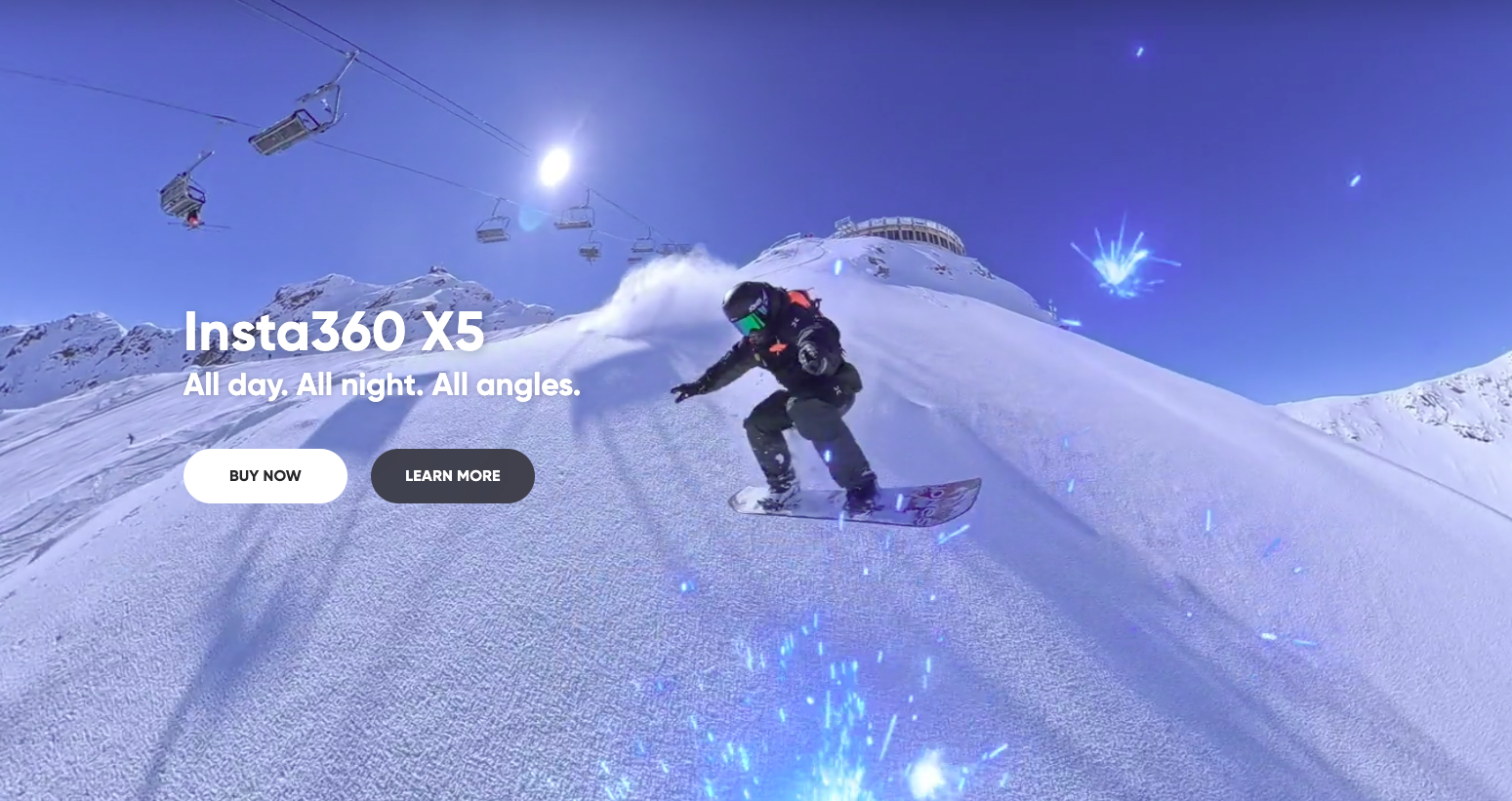
In the fast-paced world of action cameras, GoPro once ruled supreme. However, Insta360 has emerged as a fierce rival, shaking up the market with innovative features and smart designs. This article explores the Insta360 vs GoPro battle, showing how the newcomer is gaining ground. From better video quality to user-friendly apps, Insta360 pushes boundaries while GoPro fights to keep its crown. Let’s dive in and see what sets them apart.
The Legacy of GoPro: From Pioneer to Struggling Giant
GoPro started as a game-changer. Nick Woodman founded it in 2002, aiming to capture extreme sports moments. By the mid-2010s, GoPro cameras became icons for adventurers, filmmakers, and everyday users. Models like the Hero series offered rugged builds, high-resolution video, and easy mounting options. People loved them for surfing, skiing, and biking footage.
Yet, challenges arose. Competition grew intense. GoPro’s stock prices dipped, and sales slowed. Why? Innovation stalled. New models often felt like minor updates, not big leaps. Battery life remained short, and low-light performance lagged. Plus, editing software felt clunky. Despite this, GoPro holds a loyal fanbase. It excels in traditional action shots with strong stabilization and color accuracy.
However, rivals like DJI and Insta360 spotted gaps. They introduced fresh ideas, pulling market share away. For instance, in Japan during the first half of 2025, DJI grabbed 35.3% of the action cam market, overtaking GoPro for the first time. This shift highlights GoPro’s vulnerabilities. As a result, the company turned to lawsuits, suing Insta360 over patents in 2025. Both sides claimed partial wins, but it shows GoPro’s defensive stance.
The Rise of Insta360: Innovation from China
Insta360 entered the scene in 2015, focusing on 360-degree cameras. Based in Shenzhen, China, the company quickly expanded. It targeted creators who wanted more than flat videos. Early hits like the One X series let users shoot in all directions and reframe later. This flexibility appealed to vloggers and professionals.
What fueled Insta360’s growth? Smart tech integration. They added AI editing tools, making post-production simple. For example, the Insta360 app uses algorithms to suggest cuts and effects. Users praised this for saving time. Additionally, Insta360 improved hardware. Their cameras boast longer batteries—up to three hours on models like the X5—and better waterproofing.
By 2025, Insta360 released the X5, a flagship 360 camera with 8K video and upgraded sensors. It handles low light well with PureVideo mode. Celebrities like Will Smith and Bruno Mars used it for immersive content. Even MIT and the NBA adopted Insta360 for events. This buzz helped Insta360 climb rankings. Now, it’s the top 360 camera brand, outpacing GoPro in that niche.
Moreover, Insta360 diversified. The Ace Pro 2 competes directly with GoPro’s Hero line, offering 4K at 120fps and magnetic mounts. Reviewers noted its edge in dynamic range and color vibrancy. Transitioning from 360 specialist to full action cam player, Insta360 built a strong ecosystem.
Key Comparisons: Insta360 vs GoPro Features Head-to-Head
When pitting Insta360 vs GoPro, differences shine in several areas. First, video quality. Insta360’s X5 shoots 8K 360 video, allowing crisp 4K crops. GoPro’s Hero 13 tops at 5.3K in standard mode. In low light, Insta360 wins with advanced noise reduction. Tests show clearer night shots on the Ace Pro 2 versus Hero 13.
Next, stabilization. Both use tech like HyperSmooth (GoPro) and FlowState (Insta360). However, Insta360’s version feels smoother in 360 mode, reducing jitters during reframing. Users on X (formerly Twitter) often say Insta360 handles motion better for activities like mountain biking.
Battery life is another win for Insta360. The X5 lasts three hours, while GoPro’s Hero 13 manages about 90 minutes in high-res modes. This matters for long shoots. Furthermore, editing apps differ. Insta360’s software includes AI features for auto-edits, while GoPro’s Quik app is basic. Creators love Insta360’s FlashCut for quick highlights.
Durability ties them. Both are waterproof to 10 meters without cases. But Insta360 adds replaceable lenses on the X5, fixing scratches easily. GoPro lacks this. Price-wise, Insta360 often undercuts GoPro. The Ace Pro 2 starts at $450, similar to Hero 13, but bundles more accessories.
In user tests, Insta360 edges out for versatility. One X post highlighted how the X5 beats GoPro Max in specs and app features. Yet, GoPro shines in raw audio quality and traditional framing.
| Feature | Insta360 (e.g., X5/Ace Pro 2) | GoPro (e.g., Hero 13/Max) |
|---|---|---|
| Max Video Resolution | 8K 360 / 4K 120fps | 5.3K / 5.7K 360 |
| Battery Life | Up to 3 hours | Up to 1.5 hours |
| Low-Light Performance | Excellent (PureVideo) | Good but noisier |
| App Features | AI editing, auto-reframe | Basic editing |
| Price (approx.) | $450-$500 | $400-$500 |
This table shows Insta360’s strengths in modern demands.
Market Impact: Shifting Shares and User Preferences
The action camera market booms. It hit $3.06 billion in 2024 and eyes $6.81 billion by 2034. GoPro once dominated, but shares slip. Insta360 grabs attention with viral marketing. Stars like Bruno Mars showcase its cams, boosting visibility.
Users switch for innovation. On X, one said, “Insta360 hard asf… should’ve got that vs my GoPro.” Another praised Insta360’s reliability over GoPro’s issues. Sales reflect this. Insta360’s growth outpaces GoPro, especially in Asia.
Legal fights add drama. GoPro’s 2025 patent suit against Insta360 aimed to block U.S. sales, but no bans yet. This could slow Insta360, but innovation keeps it ahead.
Despite hurdles, Insta360 expands. It entered drones in 2025, challenging DJI with 360 cams. GoPro focuses on subscriptions like GoPro Premium for cloud storage, aiming to steady revenue.
Future Outlook: Can GoPro Fight Back?
Looking ahead, Insta360 vs GoPro will intensify. Insta360 plans more AI and hybrid cams. GoPro might refresh its Max line, rumored for 2025 with better 360 features. But Insta360’s pace impresses. It could dominate if patents don’t hinder.
Consumers benefit from competition. Better cams emerge. For creators, Insta360 offers freedom; for pros, GoPro provides familiarity.
In summary, Insta360 challenges GoPro through bold moves and user focus. As we have seen, its rise reshapes the industry. Ultimately, the time to act is now for GoPro to innovate or risk fading. What will the future hold if we do nothing? Only time will tell if GoPro makes the right choice. Looking ahead, the future seems promising for action cam fans.

Leave a Reply